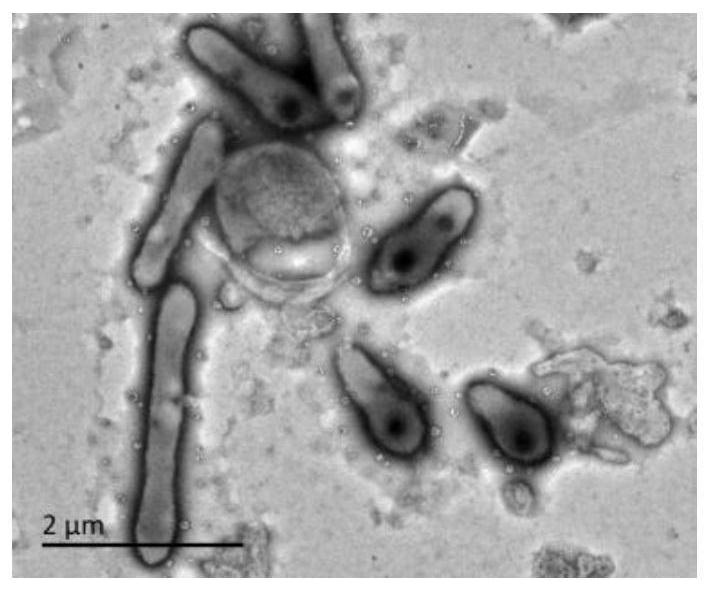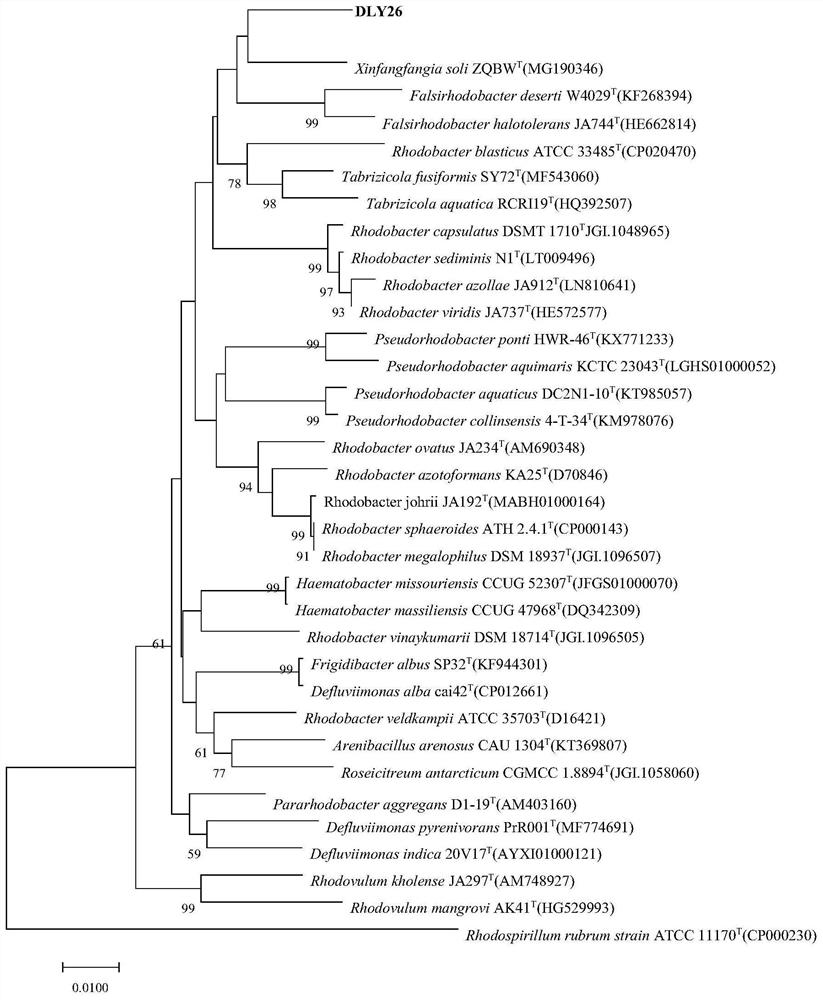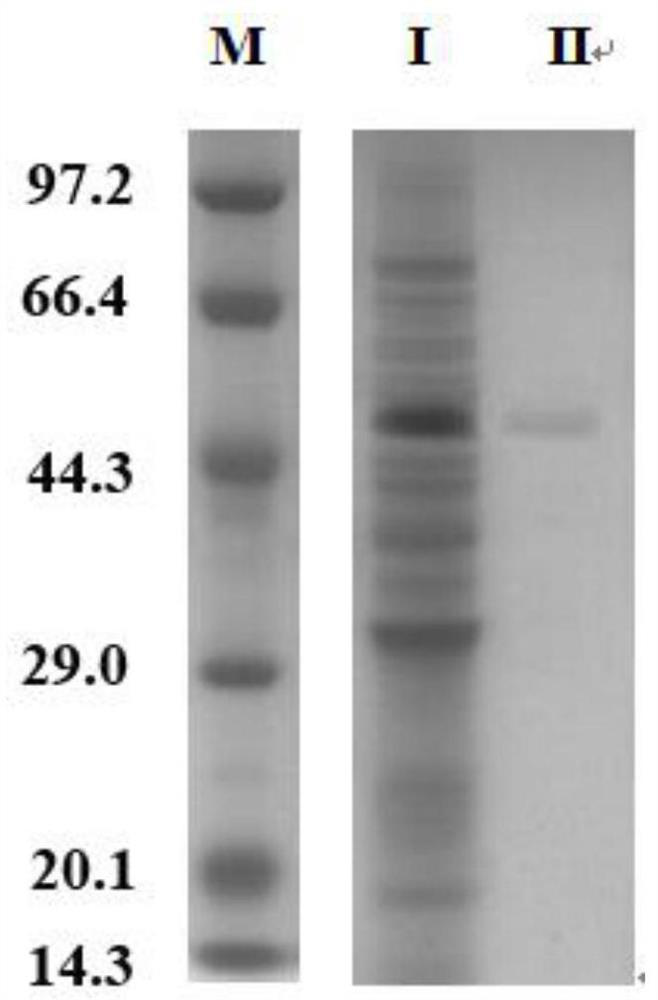Amidase xam and its encoding gene and application
A technology encoding a gene and amidase, which is applied in the fields of application, genetic engineering, plant gene improvement, etc., can solve the problems of low amidase expression, by-product environmental pollution, separation and purification difficulties, etc., and achieve high enzyme activity and wide substrate Spectrum, effect of broad substrate spectrum
- Summary
- Abstract
- Description
- Claims
- Application Information
AI Technical Summary
Problems solved by technology
Method used
Image
Examples
Embodiment 1
[0036] Example 1. Separation, identification and preservation of aromatic fungus DLY26
[0037] 1. Separation
[0038] Take about 1ml of activated sludge sample (taken from the petrochemical refining sewage treatment system) and dilute it with sterile distilled water to 10 times the volume, 20 times the volume, 50 times the volume, 100 times the volume and 1000 times the volume. 100 μl of the diluted samples were spread on the surface of the solid medium by the coating plate method, cultured at 30°C, and the growth of the surface colonies was observed every day. Pick colonies with different colors and shapes, purify and cultivate by the three-zone streak method, until a single colony with the same shape, size and other characteristics can be observed growing on the surface of the medium.
[0039] 2. Identification
[0040] The purified strains were inoculated on TSA plates, cultured at 30°C for 24 hours, and then the morphology, size and other characteristics of the cells we...
Embodiment 2
[0057] Example 2. Preparation of amidase (XAM protein)
[0058] After extensive sequence analysis, alignment and functional verification, a new protein was discovered from Aromatica spp. DLY26, which was named XAM protein, as shown in Sequence 1 of the sequence listing. The gene encoding XAM protein in Aromatia sinensis DLY26 is named as XAM gene, and its coding frame is shown in sequence 2 of the sequence listing.
[0059] 1. Construction of recombinant plasmids
[0060] 1. Using the genomic DNA of Aromatia sinensis DLY26 as a template, using a primer pair composed of am-F and am-R to carry out PCR amplification, and recover the PCR amplification product.
[0061] am-F:5'-CGG GGTACC ATGGCTGAATTCCTG-3';
[0062] am-R:5'-CC AAGCTT CTAGCGCGAAACCG-3'.
[0063] Restriction sites KpnI and HindIII (indicated by underline) were added to the upstream and downstream primers, respectively. Using the genomic DNA of Xinfangfangia sp. DLY26 as the template and am-F and am-R as the ...
Embodiment 3
[0078] Example 3. Enzymatic properties of amidase (XAM protein)
[0079] Tris-HCl buffer (50 mM, pH 7.4): Weigh 6.06 g of Tris, dissolve in ultrapure water, and adjust the pH to 7.5 with HCl.
[0080] Substrate 1 solution (1.0 M butanamide): Weigh 8.7 g of butanamide, dissolve in Tris-HCl buffer, and make up to 100 mL.
[0081] Substrate 2 solution (5.0M hydroxylamine hydrochloride): Weigh 34.75 g of hydroxylamine hydrochloride, dissolve it in Tris-HCl buffer, make up the volume to 100 mL, and adjust the pH to 7.5 with NaOH.
[0082] HCl solution (0.65M): Measure 11 mL of hydrochloric acid (36%), and make up to 200 mL with ultrapure water.
[0083] FeCl 3 Solution (356mM): Weigh 5.78g of ferric chloride and make up to 100mL with 0.65M HCl.
[0084] The effect of pH on amidase activity
[0085] 1. Optimum pH
[0086] Take the XAM protein solution prepared in Example 2, dilute it to 2 times the volume with buffer, and use the dilution as the test solution.
[0087] Detecti...
PUM
 Login to View More
Login to View More Abstract
Description
Claims
Application Information
 Login to View More
Login to View More - R&D
- Intellectual Property
- Life Sciences
- Materials
- Tech Scout
- Unparalleled Data Quality
- Higher Quality Content
- 60% Fewer Hallucinations
Browse by: Latest US Patents, China's latest patents, Technical Efficacy Thesaurus, Application Domain, Technology Topic, Popular Technical Reports.
© 2025 PatSnap. All rights reserved.Legal|Privacy policy|Modern Slavery Act Transparency Statement|Sitemap|About US| Contact US: help@patsnap.com



